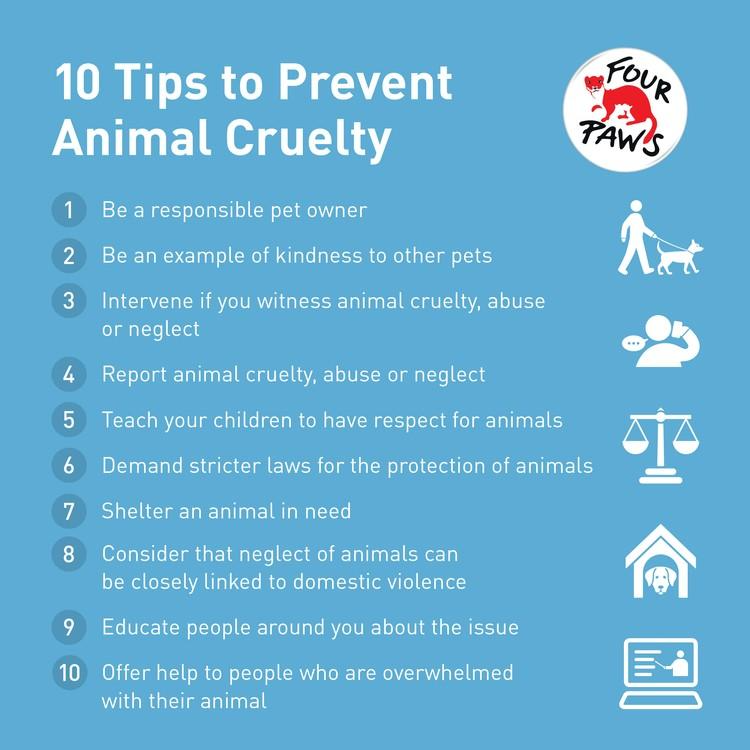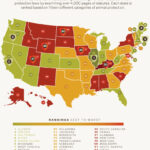Animal cruelty is an insidious reality that permeates our society, often disguised within the folds of ignorance or misplaced priorities. According to numerous surveys, many individuals express a disconcerting fascination with animals, coupled with a striking ignorance about the harsh realities faced by countless creatures. While pet ownership and wildlife observation may foster an affinity for animals, underlying societal issues frequently lead to their exploitation and mistreatment. Understanding how to mitigate cruelty against animals calls for an amalgamation of awareness, education, and actionable strategies that can yield significant changes.
Firstly, it is essential to promote awareness regarding the various forms of animal cruelty. This awareness extends beyond overt acts of violence. It encompasses neglect, exploitation in entertainment, and the cruelty inherent in factory farming. By fostering education and empathy towards animals from a young age, we can deeply embed the understanding that they are sentient beings deserving of dignity and respect. Schools and community centers can play a pivotal role by incorporating animal welfare education into their curricula, thus nurturing a generation that champions humane treatment.
Moreover, engaging the community is crucial. Local animal shelters and rescue organizations often require volunteers, donations, and support to operate efficiently. By participating in local initiatives, individuals can establish a direct connection with the challenges these organizations face daily. Volunteering not only helps reduce the burden on shelters but also allows volunteers to witness firsthand the impact of cruelty on animals, thereby solidifying their resolve to fight against it. Fundraising events such as bake sales, charity runs, or art exhibitions can also gather community support and amplify the message of animal welfare.
In addition to grassroots efforts, advocacy plays a significant role in curbing cruelty. Animals lack a voice in legislative processes that affect their welfare. This is where human advocates become indispensable. Lobbying for stricter animal protection laws and regulations can facilitate changes that hold offenders accountable. Citizens can engage with lawmakers, participate in petitions, or even utilize social media to voice their concerns about animal cruelty. Raising public awareness about existing legislative gaps can galvanize collective action toward policy reform, fostering an environment where animal rights are prioritized.
Furthermore, adopting a compassionate consumer approach is another impactful measure. The choices individuals make regarding the products they purchase have profound implications on animal welfare. Supporting cruelty-free brands and investigating the ethical practices behind products, especially within the fashion and food industries, can drive demand for humane treatment. By conscientiously choosing to invest in businesses dedicated to ethical practices, consumers send a clear message: animal cruelty is unacceptable.
Another layer to this multifaceted issue is the impact of social media. In today’s digital age, the power of social media cannot be overstated. Platforms such as Instagram, Twitter, and Facebook can be harnessed to disseminate knowledge concerning animal cruelty and promote organizations dedicated to their protection. Sharing stories, educational content, and urgent calls to action can galvanize a larger audience. Hashtags like #AdoptDontShop or #AnimalRights can create trends that mobilize communities, sparking discussions that lead to tangible changes.
Moreover, fostering supportive networks through social media can provide a refuge for activists and concerned citizens. Creating spaces where individuals can share their experiences, collaborate on projects, or simply exchange ideas can bolster motivation and drive collective movement. Each shared post, story, or article can serve as a catalyst for others, broadening the reach of the message against cruelty.
It is also crucial to address the psychological underpinnings of animal cruelty. Far from being mere acts of malevolence, animal cruelty often reflects deeper societal issues, including desensitization to violence or a lack of empathy. Public awareness campaigns that highlight these connections can be instrumental. By examining the correlations between animal cruelty and wider social issues, such as domestic violence, community leaders can foster a nuanced conversation that resonates on multiple levels. Educational entities should incorporate psychological dimensions into animal welfare discussions, emphasizing the importance of empathy and compassion as core societal values.
Engagement in local activism cannot be overstated. Individuals should seek out opportunities to attend protests, workshops, and community meetings focused on animal rights. Engaging with fellow activists not only amplifies efforts but also provides a sense of solidarity. Sharing victories, whether small or large, can enhance morale and motivate continued advocacy. Through active participation, individuals can find their niche and contribute meaningfully to the cause.
As a community, we must also focus on responsible pet ownership. This involves understanding the commitment that comes with bringing an animal into one’s home. Ensuring proper care, training, and socialization can substantially decrease incidences of neglect and abandonment. Educational campaigns targeting prospective pet owners can illuminate the long-term responsibilities and emotional investment involved. By fostering responsible ownership, we create an environment less conducive to cruelty and more aligned with compassion.
Ultimately, combating animal cruelty demands a comprehensive approach, interweaving awareness, education, advocacy, and personal responsibility. Each individual can affect change, whether through adopting pets, supporting charities, or influencing legislation. When we acknowledge animals as deserving members of our shared ecosystem, we pave the way for a more humane future. It is imperative that we engage both hearts and minds in this endeavor, for only then can we truly fulfil the moral obligation to protect those who cannot speak for themselves.










